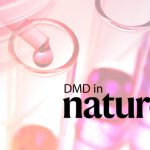
We wish to emphasize that the information contained in this article comes mainly from the RQMO website, the CORD website and the Rare Disease Day website. We thank them.
February 28th is Rare disease day 2021. Because it manifests itself only rarely, Duchenne muscular dystrophy (DMD) falls within the rare diseases category. Since this is February, it is pertinent for us to tell you about it. Learn about our history here. Over 6,000 rare diseases are characterized by a broad diversity of disorders and symptoms that vary from disease to disease and from patient to patient suffering from the same disease. Relatively common symptoms can hide underlying rare diseases leading to misdiagnosis and delaying treatment. Quintessentially disabling, the patient’s quality of life is affected by the lack or loss of autonomy due to the chronic, progressive, degenerative, and frequently life-threatening aspects of the disease. There are often no existing effective cures that add to patients and their families’ high level of pain and suffering. Read more here
About Rare Diseases
- Over 300 million people live with one or more of over 6,000 identified rare diseases around the world.
- Each rare disease may only affect a handful of people scattered around the world, but taken together, the number of people directly affected is equivalent to the population of the world’s third-largest country.
- Rare diseases currently affect 3.5% – 5.9% of the worldwide population.
- 72% of rare diseases are genetic, while others result from infections (bacterial or viral), allergies and environmental causes, or degenerative and proliferative diseases.
- 70% of those genetic rare diseases start in childhood.
- A disease is defined as rare in Europe and Canada when it affects fewer than 1 in 2,000 people.
Canada and rare diseases
About 1 in 12 Canadians, two-thirds of them children, are affected by a rare disorder. But because each disease affects only a small number of individuals, understanding and expertise may be limited and fragmented across the country.
Only 60% of treatments for rare disorders make it into Canada, and most get approved up to six years later than in the USA and Europe. People with rare disorders in Canada miss out on treatments that could save or significantly improve their lives. This needs to change.
Genetic changes cause about 80% of rare diseases. 25% of children with a rare disease will not live to see their 10th birthday.
A rare disease is a condition affecting fewer than 1 person in 2,000 in their lifetime. There are over 6,000 known rare diseases and dozens more being discovered each year, so in total, 1 in 12 Canadians will be affected by a rare disease.
Who is CORD?
CORD is Canada’s national network for organizations representing all those with rare disorders. CORD provides a strong common voice to advocate for health policy and a healthcare system that works for those with rare disorders. CORD works with governments, researchers, clinicians and industry to promote research, diagnosis, treatment and services for all rare disorders in Canada.
How does CORD serve Canadians with Rare Disorders?
1 in 12 Canadians has a rare disorder. Many others are affected or at risk but remain undiagnosed and unaware. CORD provides information to individuals and links to other rare disorder support groups and organizations from Prince Rupert, British Columbia, to St. John’s, Newfoundland.
What are CORD’s Key Challenges?
CORD represents the orphan disorders community in the development of the Canadian Orphan Drug Policy, including the proposed Expensive Drugs for Rare Disorders program within the National Pharmaceutical Strategy CORD is working to promote state-of-the-art Newborn Screening in all provinces and territories. CORD is working to ensure Canada’s Clinical Trials Registry works effectively for those with rare disorders. CORD is committed to increasing access to genetic screening and genetic counselling for all rare disorders.
CORD Strategy
The Canadian Organization for Rare Disorders (CORD) has released Canada’s Rare Disease Strategy, developed with experts from every sector. The Strategy details the extraordinary burden faced by Canadian families with rare illnesses. Challenges include misdiagnosis, unnecessary surgeries, social isolation, financial hardship, lack of treatment options and early death. These are the same challenges faced by Canadians with “non-rare” conditions, but the impact is often much more severe. The Strategy proposed a five-point action plan that will address unnecessary testing delays, wrong diagnoses and missed opportunities to treat.
About Rare Disease Day
Rare Disease Day takes place on the last day of February each year. Rare Disease Day’s main objective is to raise awareness amongst the general public and decision-makers about rare diseases and their impact on patients’ lives.
The campaign primarily targets the general public and seeks to raise awareness amongst policymakers, public authorities, industry representatives, researchers, health professionals and anyone who has a genuine interest in rare diseases.
Building awareness of rare diseases is important because 1 in 20 people will live with a rare disease at some point in their lives. Despite this, there is no cure for the majority of rare diseases, and many go undiagnosed. Rare Disease Day improves knowledge amongst the general public of rare diseases while encouraging researchers and decision-makers to address the needs of those living with rare diseases.
Equity for people living with a rare disease
What equity means for people living with a rare disease? Equity in practice means meeting people’s specific needs and eliminating barriers preventing their full participation in society. For people living with a rare disease, equity means social opportunity, equitable access to health and social care, diagnosis and treatment. On Rare Disease Day, we call for action for people living with a rare disease to have equal opportunities to realize their potential for participation in family, work and social life. Rare Disease Day’s long-term goal over the next decade is increased equity for people living with a rare disease and their families.
The challenge
The 300 million people living with a rare disease worldwide and their families face common challenges in their daily lives. As a vulnerable and neglected population, they face social isolation. There are over 6,000 rare diseases that are chronic, progressive, degenerative, disabling and frequently life-threatening. Due to the rarity of each disease and scattered populations, expertise and information are scarce. In health systems designed for common diseases, patients face inequities in accessing diagnosis, care and treatments.
How can we achieve equity for people living with a rare disease?
Advocating for the social inclusion of people living with a rare disease
To achieve equitable social inclusion for people living with a rare disease, they must first have access to holistic care covering the 360° spectrum of health, social and everyday needs.
The United Nations 2030 Agenda and its Sustainable Development Goals provide an important framework for addressing the full spectrum needs of people living with a rare disease. The Goals target issues beyond health, including education, gender, work and inequality.
Global institutions protecting human rights seek to address the health care challenges of people living with a rare disease. The Human Rights Council Resolution on access to medicines and vaccines recognizes the importance of development, access and affordability of rare disease treatments.
The following legislation promotes social inclusion for people with a disability, including those whose disability is a result of living with a rare disease: The UN Convention on the Rights of People with Disabilities (CRPD) and the report of the Special Rapporteur on the rights of persons with disabilities to 73rd Session of the UNGA.
- EURORDIS position paper on Achieving Holistic Person-Centred Care to Leave No One Behind
- The United Nations 2030 Agenda and its Sustainable Development Goals
- Human Rights Council Resolution
Including rare diseases in universal health coverage to leave no one behind
Addressing the needs of people living with a rare disease is central to achieving the UN 2030 Agenda and its Sustainable Development Goals and its pledge to leave no one behind.
To achieve this, we should move towards a strategy for universal health coverage (UHC) that addresses the needs of those living with a rare disease.
The United Nations Office of the High Commissioner for Human Rights (OHCHR) stressed the need to address rare diseases within UHC in the annual report to the UN Economic and Social Council (ECOSOC).
A hugely significant milestone has been reached with the inclusion of rare diseases in the political declaration on UHC adopted by all UN Member States, thanks to the rare disease community’s advocacy efforts, led by EURORDIS, Rare Diseases International and the NGO Committee for Rare Diseases.
More links
- Zebra striped ribbon symbol for rare diseases
- February is a rare disease month
- Diseases rarer than February 29th
Finding a support group is important
A rare disease can be isolating for the patient as well as for the caregiver, especially when it’s your child who has the condition.
Connecting with others can be essential, not only for support but also to share information and resources.



